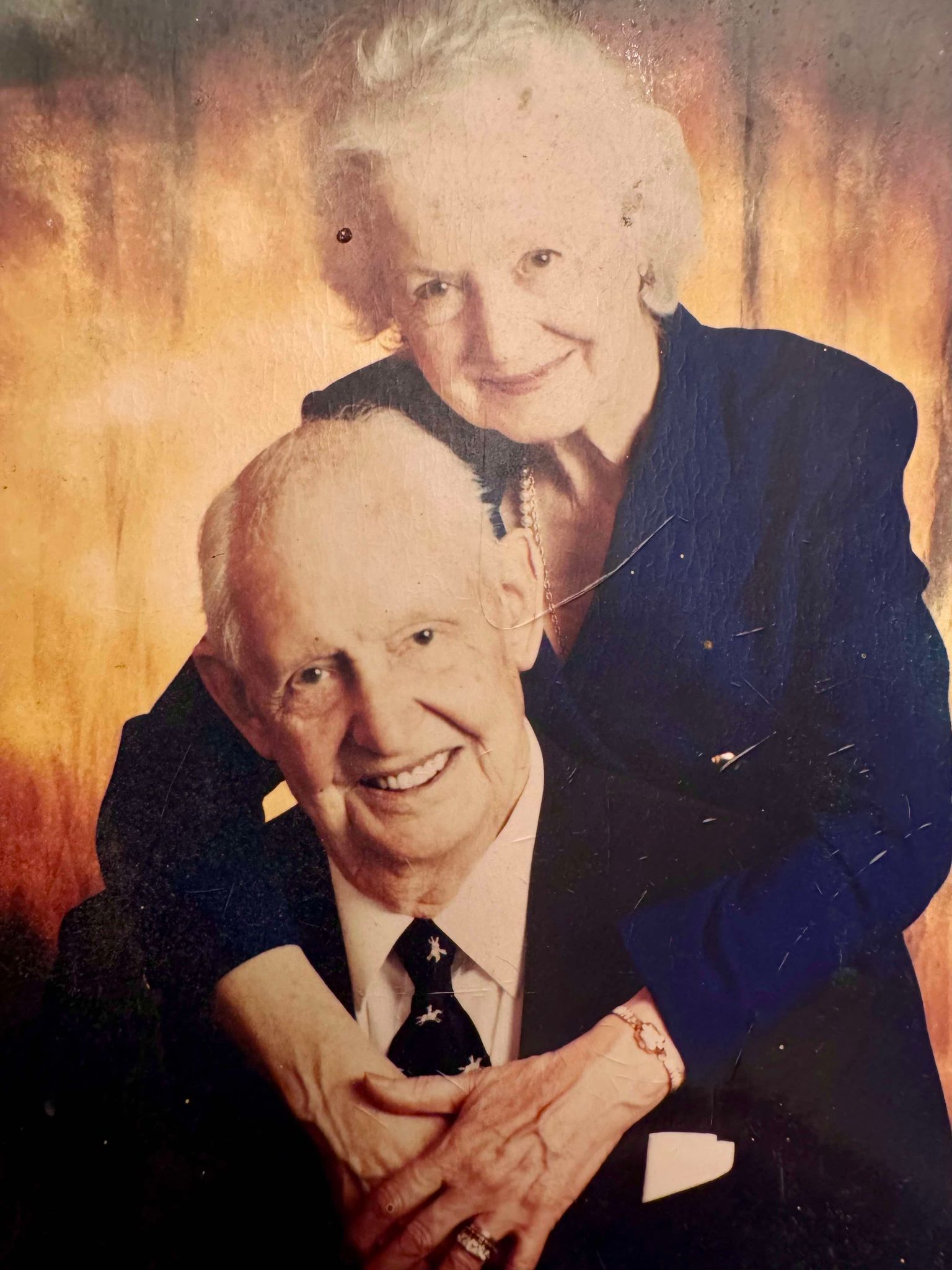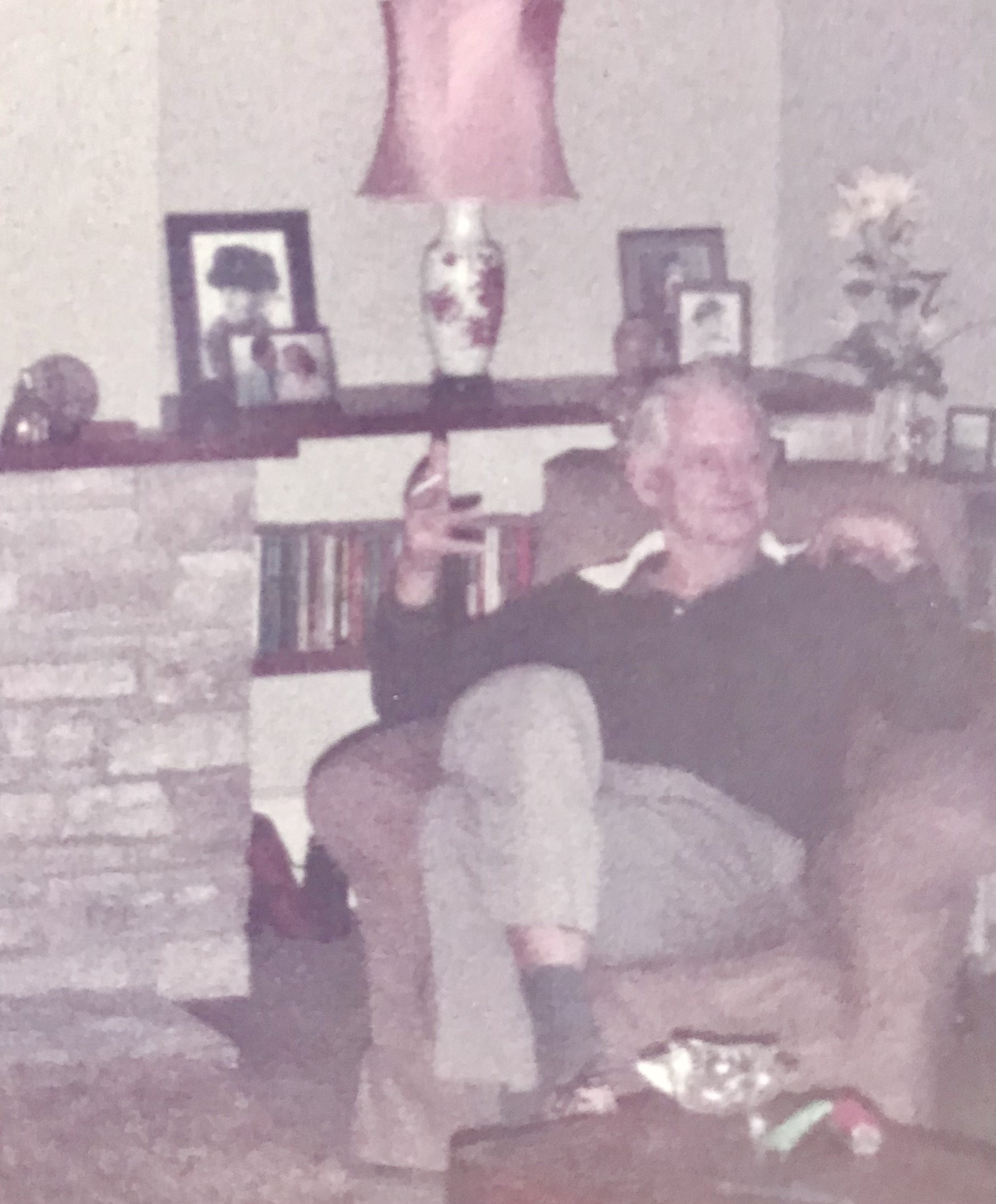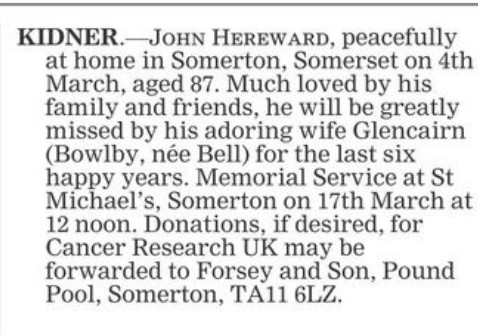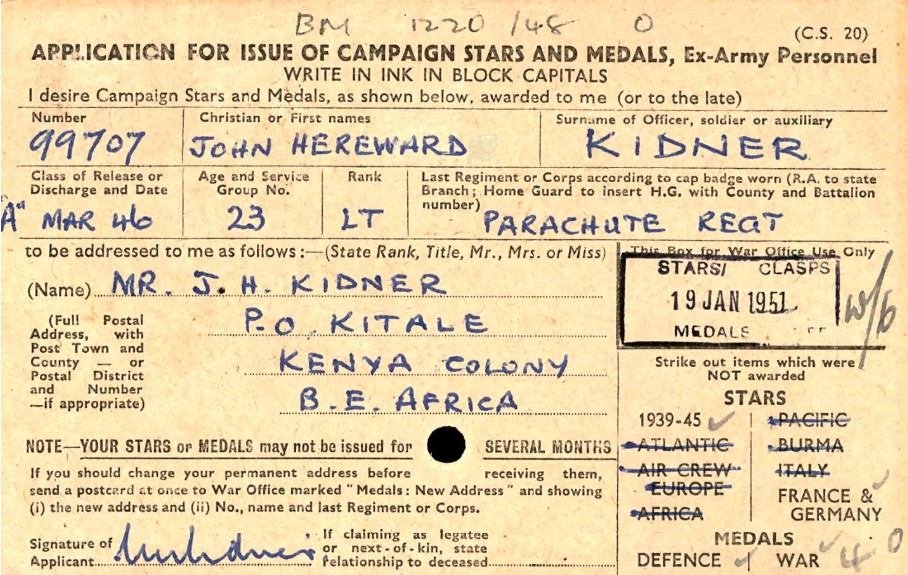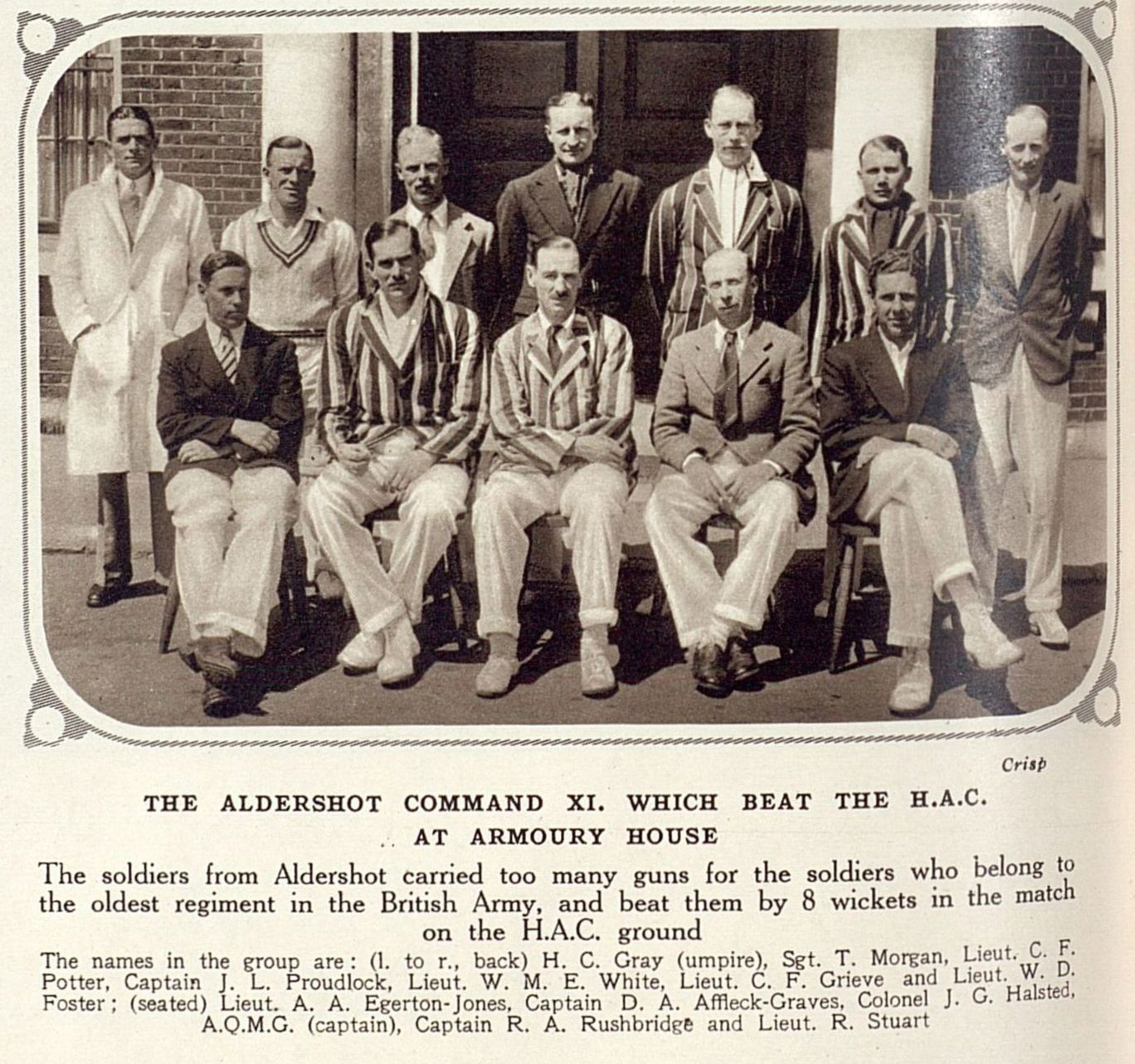He was born in Enfield, Middlesex to Alfred and Frances Kidner.
He met Christina Glencairn Jeffery Bell, known as Glencairn, and her and John were a couple during the war until John was listed as Missing in Action. She thought he had died in the war and agreed to marry an American soldier - the week before the wedding she received a letter from John saying he was alive. It was hard for her but she decided to continue with her plan to marry Herbert Bowlby and moved to Philadelphia.
He married Mrs Margaret L Collyns, nee Churchward 1 July 1954.
After the war, he went to Kenya and went into partnership on a farming estate, but gave it up in Feb 1955, returning home in June 1956. He worked for the Locust Control service in Kenya in 1954. He later joined HM Queen's diplomatic service from 1965 to retirement. He basically lived on an aeroplane with Top Secret papers in an attache case chained to his wrist all the time, it went everywhere with him, even going to the loo he recalled! He travelled the world in this service until he retired. He later lived on a boat in Chichester that leaked.
Following the death of Glencairn's husband they were put back in touch with each other following research that might have been carried out by John’s son (or another family member). Their meeting led to a re-establishing of their relationship, leading to marriage. He married Christina Glencairn Jeffery Bowlby, nee Bell 2 Nov 1998.
They moved to Parsonage Hill, Somerton, Somerset.
He remained close friends with Peter Weaver, who he had known in both Auxiliary Units and the SAS. Both were well known for enjoying a lively party.
He died on 4th March 2004 in Somerset.
| Unit or location | Role | Posted from | until |
|---|---|---|---|
| West Dorset Scout Section | Scout Section Commander | Nov 1941 | 01 Jul 1942 |
| Operation Haft | SAS combatant | 06 Jul 1944 | 10 Aug 1944 |
Army Officer
1932 to 1934 - Framlingham Collage Officer Training Corps (OTC)
26 May 1936 - joined the Honourable Artillery Company (Infantry) Territorial Army as a private, aged 19 years 8 months
1936 to 1939 - attended annual training days
1 July 1939 - promoted to Lance Corporal
2 Sept 1939 - embodied on mobilisation as Lance Corporal
30 Sept 1939 - discharged 162 OCTU (HAC) on commission to Wiltshire Regiment
5 Oct 1939 - discharge approved at Bulford, appointment to a commission
On the outbreak of war, in Sept 1939, as he had done sufficient training in the Territorial Army. He qualified for a commission in the Wiltshire Regiment, as a 2nd Lieutenant, on the 1st Oct 1939.
Certain parts of John's service record has been redacted It can be seen here
23 Oct 1939 - Joined Infantry base Depot, British Expeditionary Force (BEF)
30 Dec 1939 - posted to 2nd Battalion, Wiltshire Regiment, France
12 Feb 1940 - Linselles, France. Weather cold with snow, 2nd Lieutenant Kidner with 16 men ‘A’ Dep on
train guard, Auxi-Le-Chateau.
29 Feb 1940 - Linselles, France. Train guard of A Coy, 2nd Lieutenant Kidner, reported back from Auxi-Le-Chateau (2nd Wiltshire War diary)
15 March 1940 - Redacted, France
28 March 1940 - Redacted, Re-joined unit, France
1 May 1940 - Redacted, BEF
10 days leave in UK
1 May 1940 - Linselles, France. 2nd Lieutenant Kidner, departs on leave (2nd Wiltshire War diary)
23 May 1940 - Redacted, BEF
25 May 1940 – Emetieres, France. 2nd Lieutenant Kidner, slightly wounded and evacuated (2nd Wiltshire War diary)
27 May 1940 - Posted to ITC, Wiltshire Regiment, Devizes
1 June 1940 - Returned to UK. Struck off strength of BEF
2 June 1940 to 30 June 1940 - On sick leave. Wounded. Notice in Salisbury Times 26 July 1940
3 Feb 1941 to 22 Feb 1941 - School of Military engineering, Ripon
1 April 1941 - War Sub Lieutenant
31 Aug 1941 - Attached 7 Wiltshire Regiment, New Milton
31 Aug 1941 - Posted to No 20, Recruits Centre RAF, Filey (As Dec 1941 this was at The Cresent Hotel, Filey, Yorkshire)
17 Nov 1941 - Posted to Auxiliary Units, Filey
18 Nov 1941 - Appointed Scout Section Officer, c/o GPO, Highworth, Gloucestershire
13 July 1942 - Relinquishes appointment as Scout Section Officer, c/o GPO, Highworth, Gloucestershire
13 July 1942 - Posted to No 15 ITC, Gloucester
23 July 1942 - Joined No 15 ITC, Gloucester
18 Aug 1942 to 24 Sept 1942 - Platoon weapons course, Bisley
4 Jan 1943 - Paid acting Captain
17 Jan 1943 to 30 Jan 1943 - 3’’ Mortar course, weapons school
4 April 1943 - Temp Captain
4 May 1943 - Posted to 7th Bn Wiltshire Regiment, Colchester
14 June 1943 to 14 July 1943 - Battle Drill ??, Barnards Castle.
EWRD battle school, Harrogate
9 Feb 1944 - Posted to No 1 SAS Regiment, Shoreham
9 Feb 1944 - Relinquishes Temporary Captain to W / Lieutenant
9 Feb 1944 - Granted? Parachute pay
1 April 1944 - Transferred to Army Air Corps, Home
7 July 1944 - Embarked UK to North West Europe
13 Aug 1944 - ? UK from North West Europe
29 April 1945 - Posted to Para Regiment, Reserve Battalion, SOS 1 SAS Regiment, Beverly
3 May 1945 - T.U.S. Para Regiment, Reserve Battalion, Beverly
3 May 1945 - Temporary Captain
10 Oct 1945 - Redacted, Dorchester
29 Oct 1945 - Redacted, Dorchester
20 Nov 1945 - Redacted, Dorchester
20 Nov 1945 - WS / Lieutenant
20 Nov 1945 - Relinquishes Temporary Captain
22 Nov 1945 - Redacted, Dorchester
4 Dec 1945 - Redacted, Dorchester
14 Dec 1945 - Redacted, Dorchester
6 Jan 1946 - Redacted, Dorchester
11 Jan 1946 - Redacted, Dorchester
17 March 1946 - Struck off strength
1 July 1959 - Relinquishes Commission
In 1936 he joined the Honourable Artillery Company, a Territorial Unit, in the ranks. It was an unusual regiment which as well as providing gun batteries, also had a pre-planned role as an Officer Training Unit during wartime. This meant that as a result of completing his exams before the war, Tiny Kidner was immediately sent to complete his Officer training, resulting in his early commission, just a month after mobilisation.
He subsequently joined the Wiltshire Regiment, being pictured with other officers of what is thought to be the 1st Battalion. The photo includes a total of five officers of the 44 pictured who would later serve with Auxiliary Units.
He was commissioned and became Scout Section Officer in Auxiliary Units as his predecessor left. The visitor book at Bingham's Melcombe first recorded his arrival 18 Nov 1941. He was in command of the western half of Dorset, including Dorchester, and as far west as Lyme Regis, and almost as far east as Blandford. The eastern half was commanded by his friend, Peter Weaver. They were based in a country house owned by Lady Grogan at Binghams Melcombe. Tiny Kidner was living in the gate house.
He did around 2 weeks training at Coleshill house. He had a Thompson SMG, with a Colt 45 pistol, which he had to learn to strip, and reassemble in 2 mins, blindfolded.
He remained until 13 July 1942, when Lieutenant Geoffrey Brain took over. The latter reported that he was asked to do so because his friend Lieutenant Kidner wasn’t felt to be quite up to the job!
Lieutenant Kidner joined 1 SAS on 9 Feb 1944, along with other officers, including Lieutenant L Roy Bradford, Devon Scout Section Officer. As he had done training in explosives and unarmed combat etc. he was one of the appropriate recruits which were considered to join the SAS without any further training.
Col Paddy Mayne (commanding Officer SAS) called all the possible recruits together in London, at the Curzon Cinema, in the West End.
"Col Mayne, put to us that we might like to join the SAS, he said that we were a likely bunch of thugs, and with a view of dropping in to France, behind the lines. After a talk, he said those who would like to join please stand". Tiny Kidner was sitting next to his friend Peter Weaver, they looked at each other, and they thought it would be awful to stay sitting down, and it would show an element of cowardness, so they all stood up and joined the SAS. "None of us had been in an aeroplane before, and we were volunteering to jump out of one, fortunately with a parachute!".
He was dropped into France around 6 July 1944, behind the lines, near Le Mans as part of Operation Haft. Later, as the allied advance was in full flow, they became overrun by the allied troops. They then went back to the UK via Arromanches and the Mulberry harbour, were they got on a motor torpedo boat with his party and 2 German prisoners. He got home in Aug, 6 weeks later, as there was no further need of them in France.
The SAS was disbanded in Jan 1945, and he was returned to this regiment (RTU), but he did not re-join the Wiltshire’s, he joined the Parachute Regiment until the end of the war.
On 7th February 1945, he took an unauthorised flight in a Stirling bomber on a raid into Germany. He surprised the crew as he leaned out of the aircraft window taking photos despite heavy flak bursting around them.
He also took part in operations in Germany towards the end of the war.
Chris Perry interview in Nov 2001
Personal Communication John Kidner
Jo Burri-Weaver, Mrs Tina Warnock, niece to Mrs Christina Kidner (both nee Bell), Mr Chris Bell
Last Gentleman of the SAS, John Randell Sterlings in Action by Denis Williams
The Daily Telegraph 25 Jun 1954, The Sentinel 4 Dec 1998
MOD record office
Ancestry
12 December 1939 | London Gazette | The Gazette Page 3509 | Supplement 36628,
25 July 1944 | London Gazette | The Gazette
The Diplomatic Service List - Great Britain. Diplomatic Service Administration Office - Google Books
